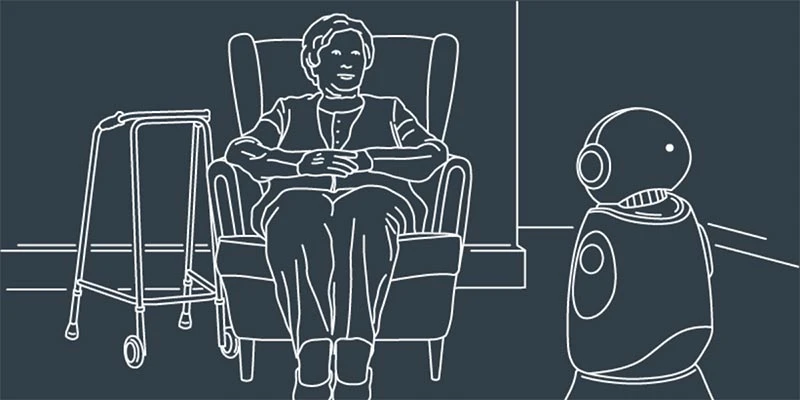This website uses cookies that store information about your usage of the page. By continuing to use this page you confirm you are happy with that.
Review and change how cookies are used.
In earlier iterations, Robot House has enabled a considerable amount of robotics research due to its major role in a number of very successful European and UK-based projects. Its infrastructure provided local researchers and partners with an appropriate infrastructure to answer scientific questions related to human-robot interaction, especially in robot-based care and domestic applications. New generations of robots, for example, Care-O-Bot, have been developed in close collaboration within these projects, contributing significantly to the establishment of the fields of social robotics and human-robot interaction. Please find below a list of concluded research projects that are closely associated with the Robot House.

The SocCred (Assuring safety and social credibility) project was a small feasibility project to identify and characterise the link between social credibility and safety, funded by the AAIP (Assuring Autonomy International Programme). An interactive experiment indicated that users are more likely to accept the safety assessment of a robot that they consider socially intelligent instead of one lacking social competency, which users considered necessary to cross-check these against their own experience.
https://www.york.ac.uk/assuring-autonomy/demonstrators/social-credibility/

ACCOMPANY (Acceptable robotiCs COMPanions for AgeiNg Years) was a 3-year project, partially funded by the European Commission under the FP7 programme. It aimed to develop a companion robot which assists elderly people to maintain their independence for longer within their home environment. The project team assessed user requirements and acceptance of the robot in their design of a physical, cognitive and social assistant for everyday home tasks. It was further investigated how the robot could contribute to the re-ablement of the user, delivering services through socially interactive, acceptable and empathic interaction. The project focused on the establishment of a co-learner relationship, where both the robot and user could provide mutual assistance.

LIREC (LIving with Robots and intEractive Companions) was an FP7 Integrated European project. It has been exploring how we live with digital and interactive companions. Throughout the project it has been investigating how to design digital and interactive companions who can develop and read emotions and act cross-platform.
The project goal was to develop user-friendly companion technology, and the UH research team focused on the development of robotics technology that can assist people in their home environment. For this reason, the research had to be carried out in a real home since laboratory conditions are often too artificial. It used the Robot House for studies because it provided an environment for autonomous companion robots enhanced by a sensor network. The project studied three scenarios: physical assistance, cognitive prosthetic and social mediator.

COGNIRON (The Cognitive Robot Companion) was an Integrated Project funded by the European Commission's FP6. The overall objectives of this project were to study the perceptual, representational, reasoning and learning capabilities of embodied robots in human centred environments. The project focused on developing methods and technologies for the construction of such cognitive robots, able to evolve and grow their capacities in close interaction with humans in an open-ended fashion.
The focus of this research endeavour was the development of a robot whose ultimate task was to serve humans as a companion in their daily life. The robot was not only considered as a ready-made device but as an artificial creature that improves its capabilities in a continuous process of acquiring new knowledge and skills.
Meet the resident robots that can participate in research studies inside the Robot House, including the Care-O-bot 4.
Robot House has opened its doors to academia and industry in the UK and internationally. Find out how to access the facility.